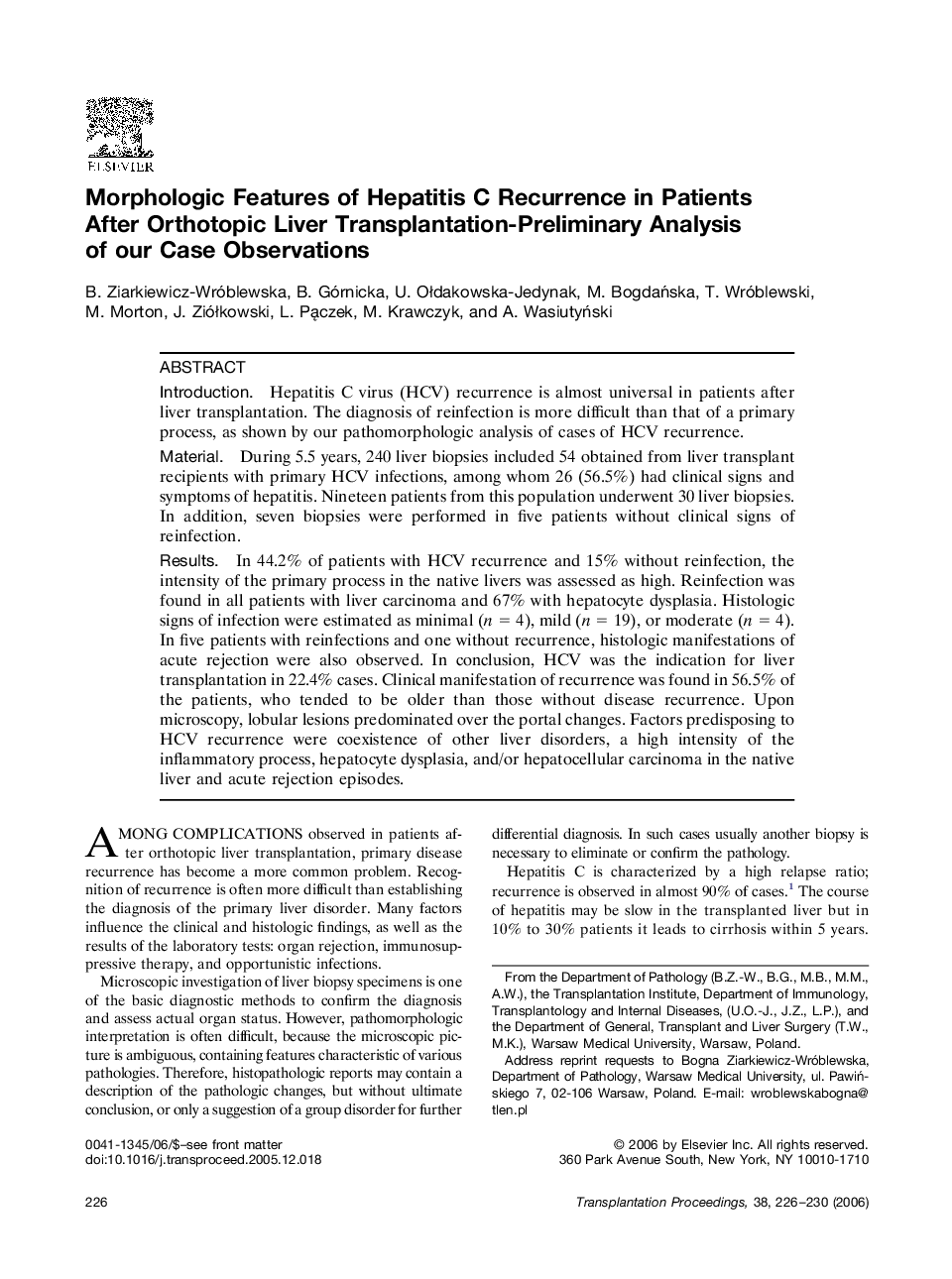| Article ID | Journal | Published Year | Pages | File Type |
|---|---|---|---|---|
| 4261824 | Transplantation Proceedings | 2006 | 5 Pages |
IntroductionHepatitis C virus (HCV) recurrence is almost universal in patients after liver transplantation. The diagnosis of reinfection is more difficult than that of a primary process, as shown by our pathomorphologic analysis of cases of HCV recurrence.MaterialDuring 5.5 years, 240 liver biopsies included 54 obtained from liver transplant recipients with primary HCV infections, among whom 26 (56.5%) had clinical signs and symptoms of hepatitis. Nineteen patients from this population underwent 30 liver biopsies. In addition, seven biopsies were performed in five patients without clinical signs of reinfection.ResultsIn 44.2% of patients with HCV recurrence and 15% without reinfection, the intensity of the primary process in the native livers was assessed as high. Reinfection was found in all patients with liver carcinoma and 67% with hepatocyte dysplasia. Histologic signs of infection were estimated as minimal (n = 4), mild (n = 19), or moderate (n = 4). In five patients with reinfections and one without recurrence, histologic manifestations of acute rejection were also observed. In conclusion, HCV was the indication for liver transplantation in 22.4% cases. Clinical manifestation of recurrence was found in 56.5% of the patients, who tended to be older than those without disease recurrence. Upon microscopy, lobular lesions predominated over the portal changes. Factors predisposing to HCV recurrence were coexistence of other liver disorders, a high intensity of the inflammatory process, hepatocyte dysplasia, and/or hepatocellular carcinoma in the native liver and acute rejection episodes.
